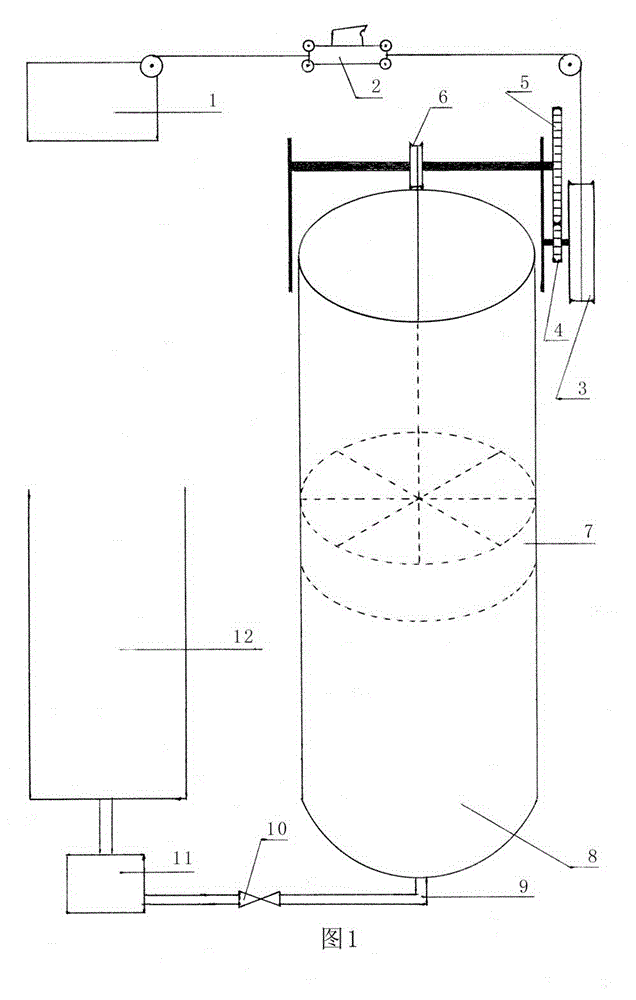Vacuum-energy-storage-type launching catapult for fixed-wing aircraft
An aircraft take-off and energy storage technology, applied in the direction of launching/dragging transmissions, etc., can solve problems such as short maintenance cycle, uneven thrust, and difficult maintenance work, and achieve low requirements for manufacturing materials, increase service life, and make full use of effect of space
- Summary
- Abstract
- Description
- Claims
- Application Information
AI Technical Summary
Problems solved by technology
Method used
Image
Examples
Embodiment Construction
[0016]First, calculate the relevant data of the embodiment. For the convenience of calculation, the value of atmospheric pressure is 1kg / cm^2. After conversion, the pressure per square meter is 10 tons; the acceleration of gravity g is 10m / s; the weight of the piston is 9 tons through the counterweight, and its gravity is assumed to be exactly Offset the friction and other resistance of the system during ejection; the diameter of the vacuum cylinder is 6 meters, and the effective stroke of the piston is 11 meters. Then the pressure area of the piston is 3.14x3^2=28.26 square meters, and the atmospheric pressure is 28.26x10=282.6 tons, which can be used for ejection. . After 9 times the acceleration from the small cable pulley to the large cable pulley, the net pulling force of the towing aircraft is 282.6 / 9=31.4 tons, and the towing distance is 11x9=99 meters. This distance can be increased by raising the oil level of the vacuum cylinder. Scaled down to accommodate ejectio...
PUM
 Login to View More
Login to View More Abstract
Description
Claims
Application Information
 Login to View More
Login to View More - R&D
- Intellectual Property
- Life Sciences
- Materials
- Tech Scout
- Unparalleled Data Quality
- Higher Quality Content
- 60% Fewer Hallucinations
Browse by: Latest US Patents, China's latest patents, Technical Efficacy Thesaurus, Application Domain, Technology Topic, Popular Technical Reports.
© 2025 PatSnap. All rights reserved.Legal|Privacy policy|Modern Slavery Act Transparency Statement|Sitemap|About US| Contact US: help@patsnap.com


